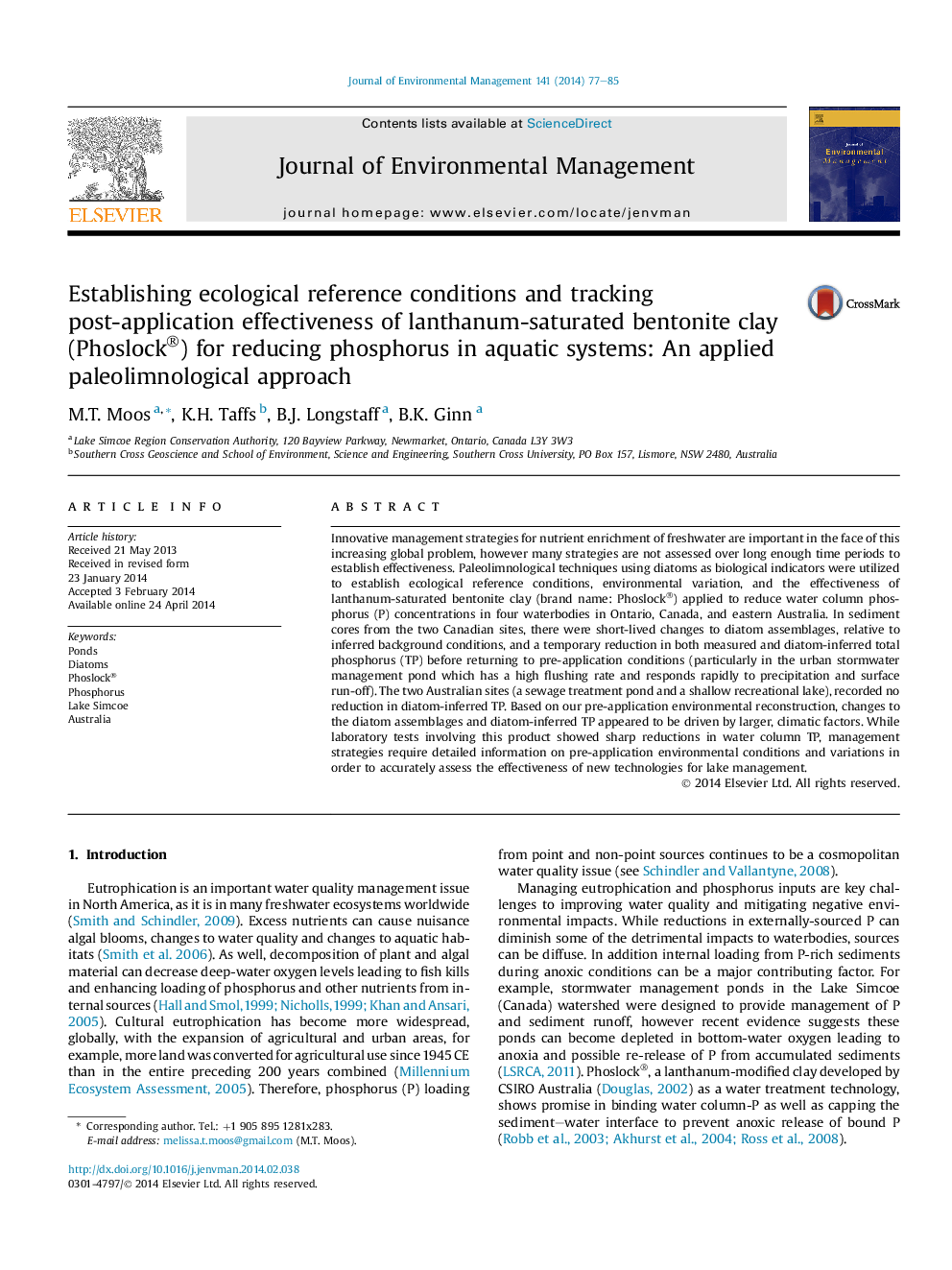| Article ID | Journal | Published Year | Pages | File Type |
|---|---|---|---|---|
| 1055911 | Journal of Environmental Management | 2014 | 9 Pages |
•We examine lanthanum-saturated bentonite clay (Phoslock®) to reduce water column phosphorus.•Canadian and Australian test sites show similar trends.•Phosphorus reductions are short-lived in systems with high flushing rate.
Innovative management strategies for nutrient enrichment of freshwater are important in the face of this increasing global problem, however many strategies are not assessed over long enough time periods to establish effectiveness. Paleolimnological techniques using diatoms as biological indicators were utilized to establish ecological reference conditions, environmental variation, and the effectiveness of lanthanum-saturated bentonite clay (brand name: Phoslock®) applied to reduce water column phosphorus (P) concentrations in four waterbodies in Ontario, Canada, and eastern Australia. In sediment cores from the two Canadian sites, there were short-lived changes to diatom assemblages, relative to inferred background conditions, and a temporary reduction in both measured and diatom-inferred total phosphorus (TP) before returning to pre-application conditions (particularly in the urban stormwater management pond which has a high flushing rate and responds rapidly to precipitation and surface run-off). The two Australian sites (a sewage treatment pond and a shallow recreational lake), recorded no reduction in diatom-inferred TP. Based on our pre-application environmental reconstruction, changes to the diatom assemblages and diatom-inferred TP appeared to be driven by larger, climatic factors. While laboratory tests involving this product showed sharp reductions in water column TP, management strategies require detailed information on pre-application environmental conditions and variations in order to accurately assess the effectiveness of new technologies for lake management.
